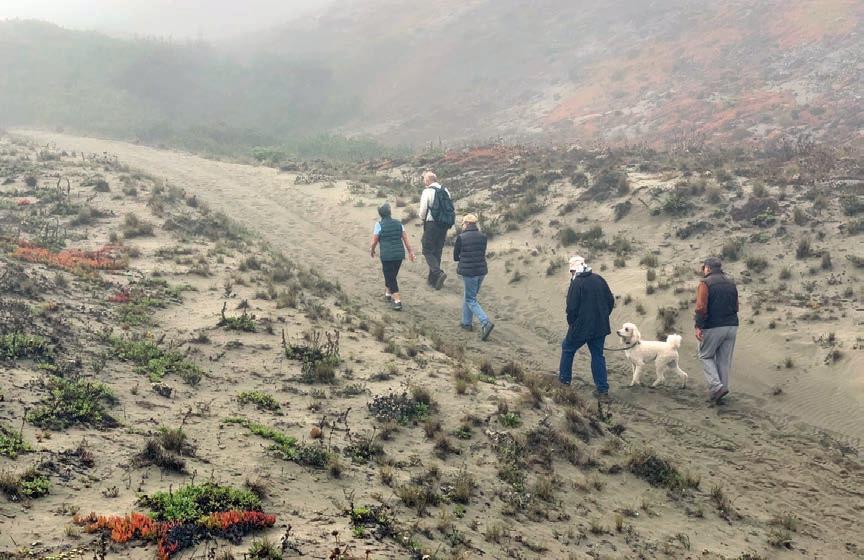
4 minute read
Get Out


Advertisement

or perhaps Dead Man’s Drop Forest, but forget that. The parcels immediately to the west of Samoa Bridge are now o cially the Samoa Dunes and Wetlands Conservation Area. “We’re looking to re-introduce this place to our community,” says Mike Cipra, who heads up Friends of the Dunes, the new titleholder of the 357 acres. “This property is a fantastic jewel for our local community and we want to emphasize just how special it is with the name.”
The recently concluded sale saw three agencies — the California Coastal Conservancy, the California Natural Resources Agency and the California Wildlife Conservation Board — joining forces to fund the purchase of 12 coastal dune and waterfront parcels from Security National for approximately $2 million. “One condition of the sale was that Security National would clean up the property following years of dumping and squatting, and they’ve done a great job. We now have a virtually pristine piece of public land for the enjoyment of everyone.”
The nonprofi t organization Friends of the Dunes is now the interim owner of the site. “This historic conservation deal was in jeopardy of falling apart,” says Cipra, “and that’s when Friends of the Dunes stepped forward to be the temporary landowner. The plan is for one of our partners to take it over for permanent stewardship, probably a state or federal agency. We just stepped in to make sure the sale went through.” Cipra has nothing but praise for all the parties involved in the sale — the ones already mentioned, plus cooperative management partners for the property, including the California Department of Fish and Wildlife, the Humboldt Bay Harbor, Conservation and Recreation District, the Bureau of Land Management, U.S. Fish and Wildlife Service and the Humboldt County Sheri ’s O ce. In addition, the whole area is the ancestral homeland of the Wiyot Tribe, with whom Friends of the Dunes is working to produce a parallel cooperative management agreement.
What makes these new public lands so special? “This is a biodiversity hotspot,” according to Cipra. Roughly a third of the property consists of Sitka spruce and shore pine forest in which huckleberry, bearberry and wax myrtle thrive. In addition there are pockets of wetlands and, of course, the expansive dunes and beach, well known to Kinetic Grand Championship racers. On a recent walk-through, our little party saw plenty of fox and deer Walking along the Humboldt Bay Municipal Water District’s waterline right-of-way in the 357-acre Samoa Dunes and Wetlands Conservation Area.


Our Newest Public Space: Samoa Dunes and Wetlands Conservation Area

1001 Main St. in Fortuna 707.725.6734 www.eelvalleyappliance.com












By Barry Evans
getout@northcoastjournal.com
You may know it as Dog Ranch
Photo by Barry Evans scat, and we heard the happy cacophony of Pacifi c tree frogs announcing their presence.
“When you look at the big picture, with 1,600 contiguous acres of land managed for habitat conservation and appropriate public access — from Lanphere and Male’l Dunes in the north to the new Samoa Dunes and Wetlands Conservation Area in the south — we have the most intact native coastal dune habitat on the U.S. West Coast. And it’s just a few minutes from both Eureka and Arcata,” says Cipra.
The property is currently accessible to walkers and equestrians (no bikes or ATVs), so long as they keep to the existing trails. Dogs are allowed on leash, with humans requested to clean up after their dogs. Best access is from opposite Cookhouse Road (park there, not in front of the locked gate, please), or walk in along the waterline track, either from the Power Pole parking area to the south or Manila Dunes to the north. Friends of the Dunes are conducting limited walk-throughs of the property on a monthly basis: Call them at 444-1397 if you’d like to join a scheduled tour. ●
Barry Evans (he/him) chooses walking over talking any day.










